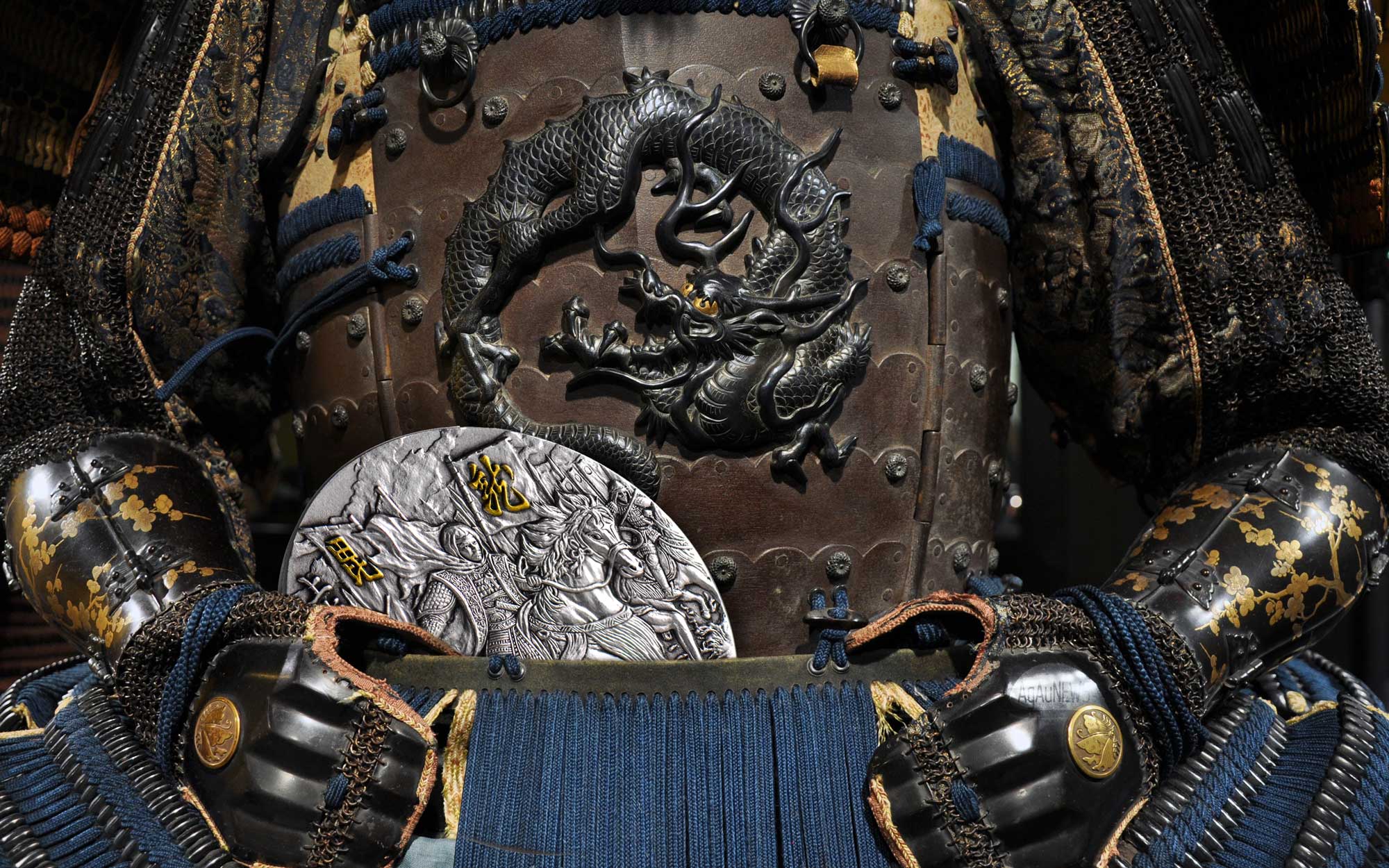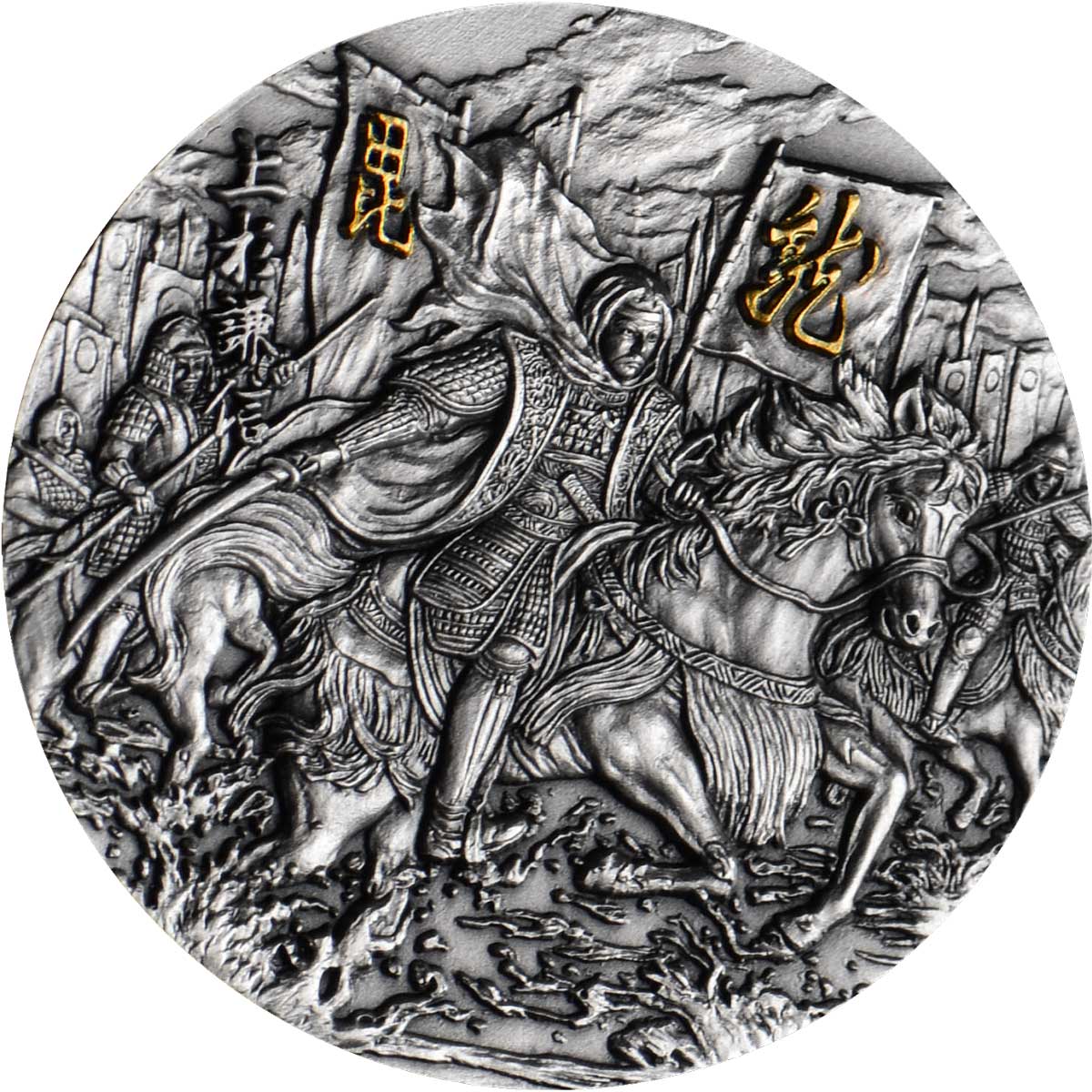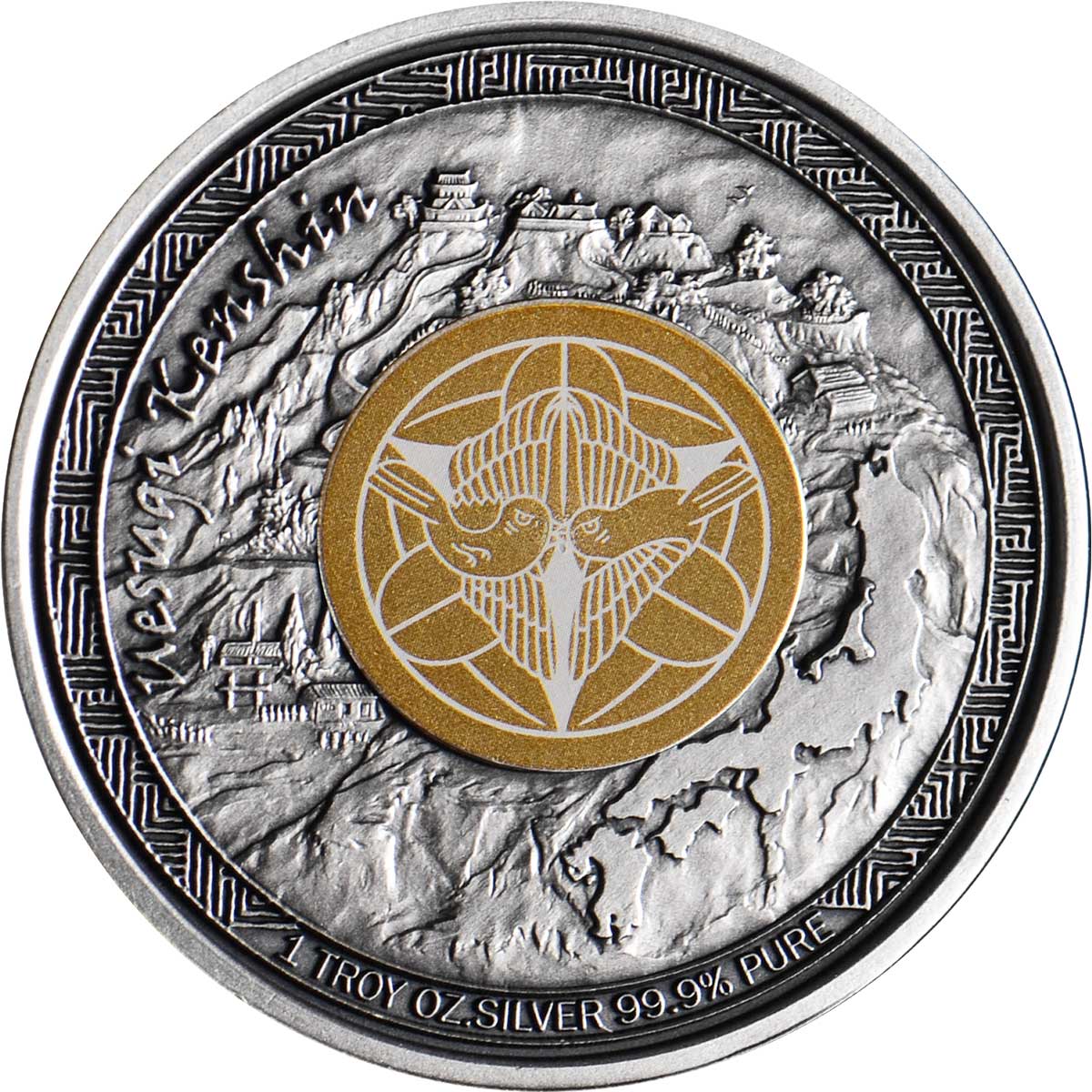Legendary Japanese warrior Uesagi Kenshin starts Truney P.M.’s new three coin Sengoku inspired set
It’s good to see an increased amount of interest in the ancient and medieval worlds that isn’t centred on Europe and the Mediterranean Sea. After years of Greek, Roman and Egyptian themed subjects taking the lions share of numismatic attention, we’re finally seeing producers look further afield. Continuing that trend, Truney Precious Metals have debuted the first in their new three-coin series looking at the pivotal figures of Japans Sengoku period.
Known as the “Age of Warring States” and encompassing the period from around 1467 -1600 AD, this was a time of great internal conflict and political upheaval in Japan. It is defined as a period in which the countries feudal system had collapsed, initiated by the Ōnin War and ended by its reintroduction under the shogunate of Tokugawa Ieyasu.
Obviously a fascinating subject for a coin series, Truney have chosen legendary Samurai warrior Uesugi Kenshin as the headliner of the first issue. A daimyō born on February 18, 1530, he had an enviable military career, losing only twice in the 71 biggest battles he fought. The most famous of them all were the battles of Kawanakajima fought against his only serious rival, Takeda Shingen of Kai Province. There were five major battles there between 1553 and 1564, the most famous of which was the fourth at Hachimanbara in 1561. Depicting Kenshin on horseback in full charge with his army around him, this is an action-packed design that seems to take inspiration from the epic Japanese movies and TV series about the period. A little light gilding of the Kanji symbols is a nice subtle touch on this high-relief antiqued face. The obverse is a mix of landscape scenes, a map of Japan, and the family crest of the Uesagi family,
All told, an excellent issue and at an ounce in weight, considerably more affordable than the many Mint of Poland 2oz coins on the market with associated subjects. It comes boxed with a Certificate of Authenticity, of course, and as you can see from the images, there have been no compromises made for the lighter weight, especially as it still hits a healthy enough 40mm in diameter. Available to pre-order from Truney, from distributor Powercoin, and no doubt from other dealers shortly, it will start to ship around years end. The second issue will feature Uesagi’s arch-rival, Takeda Shingen, with the third planned to be of a different format that will tie the set together in its own presentation box.
MINTS DESCRIPTION
The Famous Samurai of the Sengoku Period of Japan-日本戰國名將系列 Uesugi Kenshin-上杉謙信
In 1467, the first east-west war in Japan has begun. Every Daimyō, the seigniors of Japan, rose and fought for the inheritance of the ninth generation supreme general. With the full civil war, Japan had officially entered the Sengoku Period. As the saying goes “A hero is known in the time of misfortune”. In the war mist and the clatter of horses’ hooves, numerous heroes and legendary warriors were born in this age of rivalling warlords.
After the death of his father, Uesugi Kenshin led the army for defending the land against the rebellious courtiers and won the first full victory at the age of 14. After putting down the rebellion, the young Kenshin inherited the fief land “Echigo”, started his legendary story and won the famous name “The Dragon of Echigo” from other Daimyō. At the back and in the middle of the medal is the “Kamon” (family crest) of the Uesugi family, two sparrows in a bamboo grove, represents the official position of Kenshin, the command of Kantō. The bamboo has the symbol of rising and bravery in Japan, shows out the quality of the warrior family. The map of ancient japan at the bottom right corner marks the location of the land Echigo, and the background of the medal is Kenshin’s castle on the hill, the castle of Kasugayama.
With the strong faith of “Bishamonten”, one of the Four Heavenly Kings in Japanese Buddism, as the god of warriors and a punisher of evildoers, Kenshin rose the flag of Bishamonten in every battle, and claimed himself was blessed and possessed by it, and truly become an invincible general. In all Kenshin’s life, he fought no injustice battle, and held the faith of “righteousness first”, and rarely invaded other small countries. In all 71 big battles in his life, Kenshin made an amazing record of 61 victories, 2 defeats and 8 draws. By defeated the most powerful Daimyō at the time, Oda Nobunaga, in the battle of Tetorigawa, Kenshin’s fame spread all over Japan, and won him another famous title in Japanese history, “The God of Army.”
Throughout all the generals at the same time, there was only one opponent could be Kenshin’s match, Takeda Shingen, known as “The Tiger of Kai”. What is present in the front of the medal is one of the scenes in the battle of Kawanakajima, which took almost ten years between Kenshin and Shingen. Leading the famous cavalry of Uesugi, and wearing in the white robe, Kenshin charged in the front line as the god of the warrior with the flags of dragon and Bishamonten. By drawing away from the main forces of the enemy, he aimed the command post of Takeda Shingen, prepared to assault alone and cut the head of this ferocious tiger of Kai.
Image below by SHIKABANE TARO is of Uesagi Kenshins grave in Japan.
| SPECIFICATION | |
| DENOMINATION | Not applicable |
| COMPOSITION | 0.999 silver |
| WEIGHT | 31.1 grams |
| DIMENSIONS | 40.0 mm |
| FINISH | Antique |
| MODIFICATIONS | High-relief, gilding |
| MINTAGE | 1,000 |
| BOX / COA | Yes / Yes |






Leave A Comment